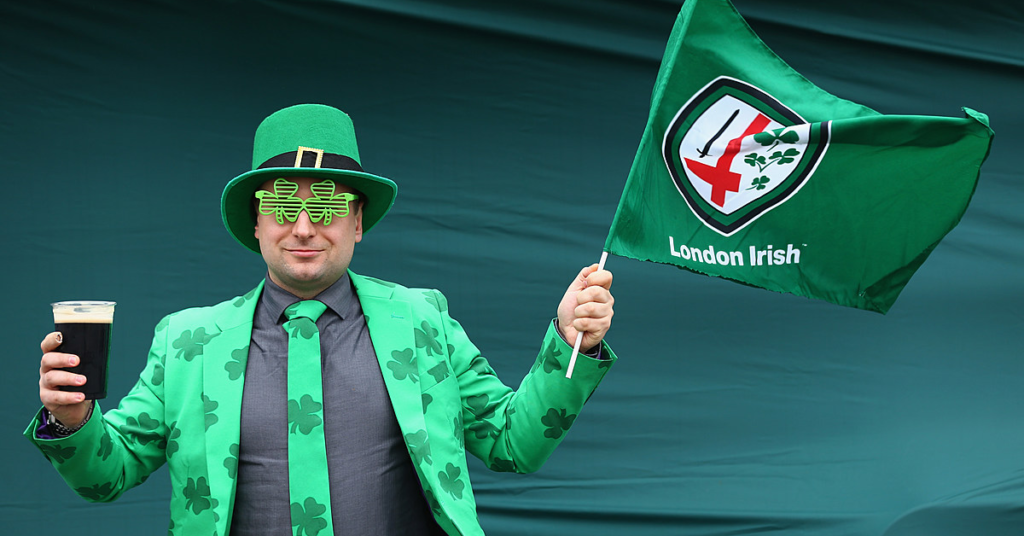St. Patrick’s Day, celebrated annually on March 17th, is a day of cultural and religious significance, honoring St. Patrick, the patron saint of Ireland. The holiday is marked by vibrant parades, the donning of green attire, and lively public festivities.
However, one tradition that often piques curiosity is the act of pinching those who aren’t wearing green.
This tradition, while seemingly playful and innocuous, carries a rich history and cultural significance that dates back centuries. The act of pinching serves as a reminder of the folklore surrounding leprechauns, mythical creatures from Irish folklore.
According to legend, wearing green makes one invisible to these mischievous beings, who would pinch anyone they could see (i.e., those not wearing green). Over time, this tradition has evolved into a fun practice that encourages participation in the holiday’s festivities and the wearing of green, a color strongly associated with Ireland.
The act of pinching on St. Patrick’s Day is a peculiar tradition that is widely observed in the United States.

History of Pinching on St. Patrick’s Day
Origin of the Tradition
People believe the tradition of pinching those not wearing green on St. Patrick’s Day started in the early 1700s
The pinch was a reminder for those who forgot to wear green that leprechauns would sneak up and pinch green-abstainers. The pinch served as a playful warning that one could be snuck up on at any moment by a leprechaun.
Role of Leprechauns
Leprechauns are mythical creatures from Irish folklore. They are often depicted as little men in green coats, who if caught by a human, will give them three wishes in exchange for their freedom.
The tradition of pinching comes from the folklore that says wearing green makes you invisible to leprechauns, which is why people pinch those who don’t wear green. It’s a way to remind each other about the folklore and to keep the Irish traditions alive.
Evolution Over Time
Over time, this tradition has evolved and is now widely practiced in the United States on St. Patrick’s Day, regardless of one’s Irish heritage. It serves as a playful reminder to participate in the wearing of green – a universally recognized symbol of Ireland.
Cultural Impact of Pinching
Practice Around the World
The tradition of pinching on St. Patrick’s Day, although it originated in Ireland, has now spread to various parts of the world. In countries like the United States, Canada, and Australia.
It’s fascinating to see how a small act of pinching has transcended borders and become a global phenomenon.
Influence on St. Patrick’s Day Celebrations
The act of pinching has become an integral part of St. Patrick’s Day celebrations. It adds a layer of fun and interaction to the festivities.
Whether it’s in schools, offices, or social gatherings, people look forward to pinching their friends and colleagues who aren’t wearing green, making the day more memorable.

Modern Interpretation
In today’s world, the tradition of pinching on St. Patrick’s Day is seen more as a playful act rather than a superstition. It serves as a conversation starter and a way to connect with others. While some people might see it as a fun game, others view it as a way to keep the Irish heritage alive.
Psychology Behind Pinching
Social Aspect of Pinching
The act of pinching on St. Patrick’s Day is not just a playful tradition, but it also has a social aspect. It serves as an ice-breaker and a way to initiate interaction among people. Whether it’s friends, family, or colleagues, the act of pinching brings people together and fosters a sense of community.
Psychological Impact
From a psychological perspective, the tradition of pinching can be seen as a form of social bonding. It’s a shared experience that people look forward to, and it creates a sense of belonging and camaraderie.
Moreover, it adds an element of surprise and excitement to the celebrations, making the day more enjoyable.
Role of Tradition in Social Bonding
Traditions like pinching on St. Patrick’s Day play a crucial role in social bonding. They provide a common ground for people to connect and share experiences. These traditions become a part of our identity and help in strengthening our social connections.
Conclusion
The tradition of pinching on St. Patrick’s Day has stood the test of time. Despite the changes in society and culture, this tradition continues to be a significant part of St. Patrick’s Day celebrations. It’s a testament to the enduring nature of cultural traditions and their ability to adapt and survive.
Understanding the reasons behind cultural practices like pinching on St. Patrick’s Day helps us appreciate the richness and diversity of human cultures. It allows us to see beyond the surface-level practices and understand the deeper meanings and significance they hold.
FAQ’s
Pinch serves as a playful reminder that leprechauns could sneak up and pinch green-abstainers.
Leprechauns are mythical creatures from Irish folklore. The tradition of pinching comes from the folklore that says wearing green makes you invisible to leprechauns, which is why people pinch those who don’t wear green.
It serves as a playful reminder to participate in the wearing of green – a universally recognized symbol of Ireland.
The tradition of pinching on St. Patrick’s Day, although it originated in Ireland, has now spread to various parts of the world. It adds a layer of fun and interaction to the festivities and serves as a conversation starter and a way to connect with others.
It’s a shared experience that people look forward to, and it creates a sense of belonging and camaraderie.
Understanding the reasons behind cultural practices like pinching on St. Patrick’s Day helps us appreciate the richness and diversity of human cultures. It allows us to see beyond the surface-level practices and understand the deeper meanings and significance they hold.
“The Emerald Isle,” and the green stripe in the Irish tricolor flag. Green is also the color of spring.
Participating in St. Patrick’s Day celebrations, including the tradition of pinching, brings joy and excitement.

